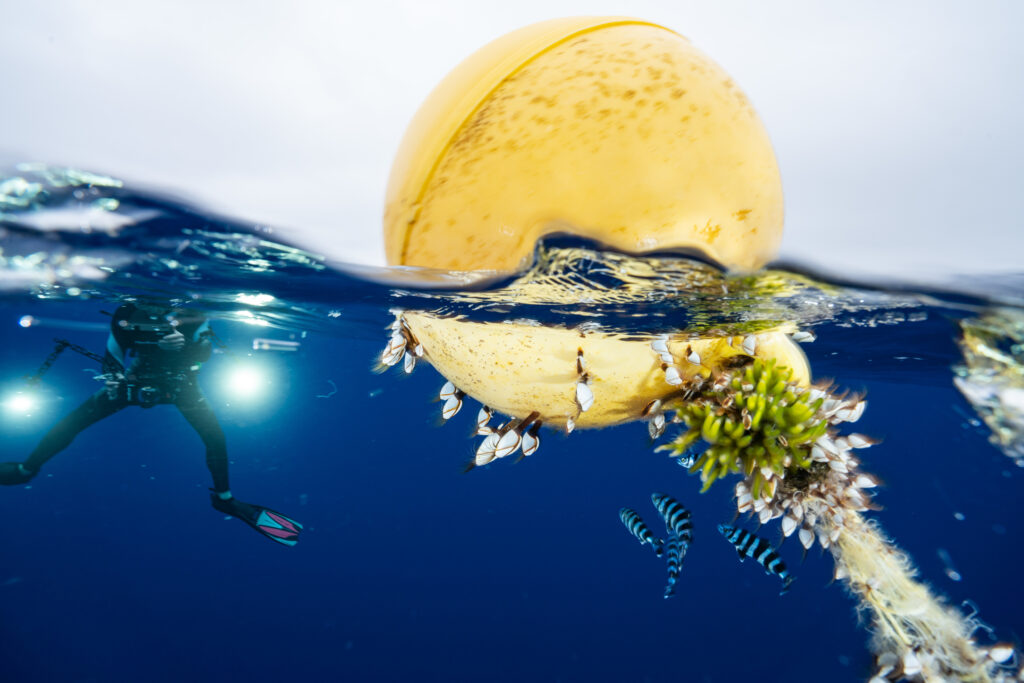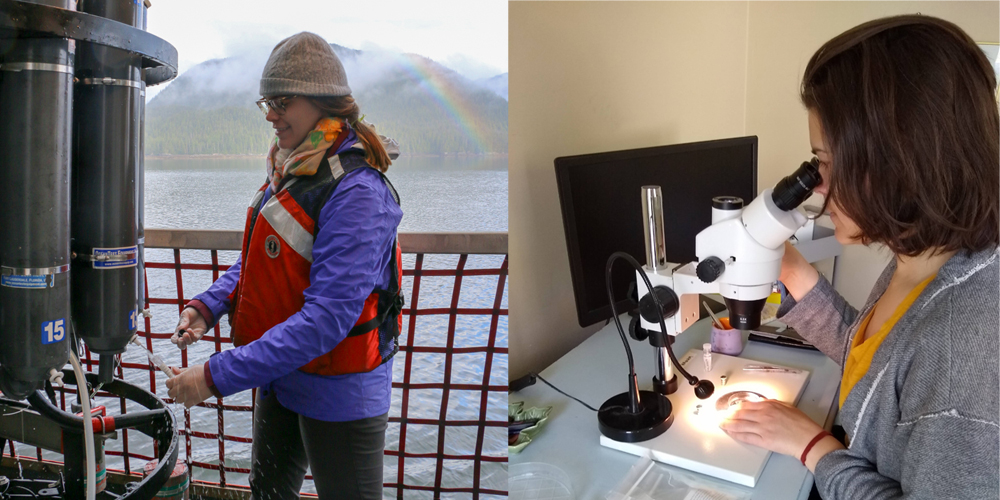by Isabella Eclipse

Plastic buoy in the Great Pacific Garbage Patch, colonized by gooseneck barnacles and crabs. (Credit: Justin Hofman/Greenpeace)
This article is part of a series of posts highlighting research the Smithsonian Environmental Research Center is continuing to do amid the COVID-19 pandemic, and adaptations its staff have been making in a more socially distant world.
In nature, adaptation is key to survival. This year more than ever, being adaptable and resilient has also been essential to working as a scientist. Faced with a pandemic, researchers around the world have had to find creative ways to continue their work.
SERC postdoc Linsey Haram is part of the FloatEco Project, a research collaboration that studies artificial ecosystems made of floating ocean plastic. By hitchhiking on pieces of plastic, coastal organisms can drift into the Great Pacific Garbage Patch and survive in the middle of the ocean.
These rugged organisms have adapted remarkably well to their new environment. Scientists are concerned they could outcompete species native to the open ocean or be carried on plastics to distant shores. Understanding what species can survive on ocean plastic, where they come from, and how much they’re reproducing is critical. Haram’s job is to catalog the organisms that have colonized samples of plastic and artificial settlement plates, which scientists place in the ocean to get a snapshot of what species are in the Garbage Patch.

Left: Linsey Haram on an expedition to British Columbia in summer 2018 (Credit: Stephen Page) Right: Linsey Haram analyzes microscopic samples of plastic in her home during the pandemic. (Photo courtesy of Linsey Haram)
Normally, Haram relies on nonprofits or private sailors to collect plastic debris for her to analyze. But because of the pandemic, no one was sailing towards the middle of the ocean. Enter Mary Crowley, founder of the Ocean Voyages Institute, a nonprofit that tags and removes plastic waste from the ocean. When plastic is entangling animals and polluting water every day, cleanup can’t wait for a pandemic to end. Following the latest safety protocols, Crowley and her crew aboard the S/V KWAI gathered samples of plastic and retrieved settlement plates that had been floating in the Garbage Patch for the last year.
“They had all of their crew quarantine on the boat just off the coast of Hawaii for two weeks before the expedition, and they all got tested as well,” Haram explained.
Once the expedition began, the boat did not make any stops. 48 days later, the S/V KWAI arrived in Honolulu with a record-breaking 103 tons of plastic from the Great Pacific Garbage Patch. Crowley’s team also found four of Haram’s settlement plates. Against all odds, they were able to remove more plastic trash from the ocean and provide SERC scientists with the specimens they need to keep doing research at home.
“They’ve been really instrumental in us being able to do any research this year,” Haram said.
In times of crisis, the power of teamwork is coming through more than ever.
Watch: Ocean Voyages Institute completes largest ocean cleanup, retrieving 103 tons of plastic
More Research During COVID:
Repurposing Nature To Restore the San Francisco Shoreline
Carbon Sensors in the Time of Coronavirus
Orchid Hybrids Offer Clues for Conservation
TEMPEST Experiment Mimics Future Storms Inside Forests
How the “Blue Methane” Team Used COVID Restrictions To Get More Data Than Ever

